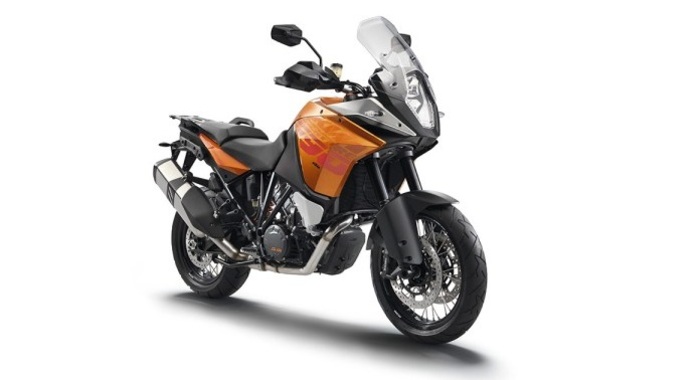Yamaha has just launched the MT-15 at Rs 1.36 lakh (ex-showroom, Delhi). Essentially a naked version of the R15 V3.0, the MT-15 is Yamaha’s most performance-oriented sub-200cc naked offering in India, yet. The MT-15 pricing results in it sitting close to other higher capacity street-nakeds like the TVS Apache RTR 200 4V and the Bajaj Pulsar NS200. Both these motorcycles might be from a segment above, but their competitive pricing and compelling all-round performance will prove to be a challenge for the MT-15 to overcome. We’ve also added the recently launched KTM Duke 125 to the mix. Despite producing lower output figures in this company, the 125 Duke fits right into this comparison with its pricing.
Powertrain
At the heart of the MT-15 is the same 155cc motor that’s also seen on the R15 V3.0, however, Yamaha has said that it has remapped the ECU to better suit its intent. This single-cylinder engine may not produce the highest numbers here and, with this being a spec comparison, it means the MT-15 doesn’t come out on top when you look at the numbers. However, a distinctive upper-hand that this engine does have is the use of what Yamaha calls VVA or Variable Valve Actuation. To elaborate, the VVA system essentially employs a solenoid coil-based valve operation mechanism that utilises low-cam and high-cam intake rocker arms towards either end of the rev band. This is a large part of the reason that output figures of this motor are in the ballpark of those produced by some motorcycles in the 200cc class, two of which we are using in this comparison – the Apache RTR 200 4V and the Pulsar NS200.
Owing to its larger displacement, the 197.7cc motor on the Apache RTR 200 4V has slightly higher output figures – 20.5hp and 18.1Nm of torque. Meanwhile, the Pulsar 200NS is the most powerful bike here, with the 199.5cc engine making 23.5hp and 18.3Nm of torque, a whole 9hp more than the baby Duke that produces a commendable 14.5hp and 12Nm of torque.
On the transmission front, while the powerplant on the KTM, Bajaj and Yamaha are mated to a 6-speed gearbox, transmission is taken care of by a 5-speed unit on the TVS. Interestingly, the RTR 200 4V and the MT-15 come with a slip-and-assist clutch. What this results in is a clutch lever that’s much lighter in operation and a rear wheel that doesn’t lock or hop around as much under hard downshifting. A nifty feature if you were to ever take one of these bikes to the racetrack! Although the gearbox is similar to the one on the R15, Yamaha has changed the final gear ratio on the MT-15.
Chassis
Ironically, something that the MT-15 and 125 Duke have in common is that they both lost some higher-end hardware (as compared to their internationally sold variants) to be priced more competitively. The KTM 125 Duke sold in India lost out on higher spec-suspension and some features that we’ll take a look at below. The MT-15, on the other hand, was deprived of a USD fork and a more complex swingarm, in comparison to the Thailand-spec MT-15. The 125cc motor of the India-spec 125 Duke sits on the same trellis frame as the Duke range that is currently on sale here. It’s the only bike in this comparison to feature a USD fork, while a monoshock unit is common to all the four. The MT-15, 200NS and RTR 200 are equipped with a conventional telescopic fork. The front fork on the MT-15 has decreased trail as compared to the R15 V3.0. The KTM’s chassis setup results in it being an extremely agile motorcycle, but the MT-15, with Yamaha’s signature ‘Deltabox’ perimeter frame, is a neat handling motorcycle as well. It appears this is something Yamaha takes pride in, as it invited us to ride the R15 V3.0 on a racetrack as well when it was launched. Precise and immediate in its handling, the R15 is no slouch, and we’ll soon know if the same can be said about the MT-15.
Meanwhile, a twin-spar frame is used on the Pulsar 200NS, which also happens to be the heaviest bike here at 154kg. That said, it makes up for the added weight with the extra power, as can be seen from the power-to-weight ratio. The Apache, on the other hand, gets a unique split double-cradle frame, with the engine acting as a stressed member.
Stopping power on the MT-15 comes from a 282mm/220mm (front/rear) disc brake combo. The same setup is seen on the R15 V3.0. These brakes aren’t the best in the business and were one of the only complaints we had about the R15. Slowing down the 200NS and 125 Duke are a bigger 300mm/230mm disc combo, while the RTR 200 comes with a 270mm/240mm setup. All four bikes come with ABS, either as standard or as an optional variant. The MT-15 gets a single-channel ABS unit, unlike the dual-channel one on the R15 V3.0. The 125 Duke and 200NS come with single-channel ABS as well. The RTR 200 4V is available in fuel-injected and carburetted variants, with only the latter getting ABS in the form of a dual-channel system. With the April 1 ABS deadline just weeks away, the fuel-injected variant is likely to get the safety feature soon.
Design
As mentioned earlier, the India-spec 125 Duke doesn’t get the same specifications as the internationally sold bike. For starters, it’s designed like the 200 Duke that’s currently on sale in India. In contrast, the 125 Duke sold abroad is designed like the current-gen 390 Duke and KTM’s larger street-naked motorcycles. As a result, the 125 Duke loses out on the LED headlight, and a full TFT dash. Nevertheless, it is still a rather fresh looking motorcycle and its design has stood the test of time.
The Yamaha MT-15, meanwhile, is inspired by its almost-litre-class bigger sibling, the MT-09. Most noticeably, the headlight design is a unique styling element. Unlike on the internationally sold MT-15, the India-spec bike doesn't feature brightly coloured wheels.
The Apache RTR 200 4V and Pulsar 200NS have relatively less dramatic styling approaches. The two motorcycles also have a more relaxed riding position. Keep in mind, none of these bikes are track tools that will have you bent over reaching for the handlebars, and it's only over long durations of riding that your body will start to feel the effects of the ergonomic differences.
Summing it up
All four motorcycles are naked, performance-inclined bikes that could double as daily commuters, with ease. At Rs 1.36 lakh, the MT-15 has its hands full with the competition. It costs just Rs 3000 lesser than its fully faired counterpart and a fair bit more than the other bikes in this comparison. That said, the MT is also Yamaha’s strongest entry in this sub-200cc naked segment, and would prove to be a strong contender if the company manages to translate the characteristic of the successful R15 V3.0 to its naked counterpart. While, the bikes are closely matched on paper, the way they stack up against each other in the real world could be very different. We’re riding the new Yamaha MT-15 in a few hours, so stay tuned to find out what we think.
All prices ex-showroom Delhi.































